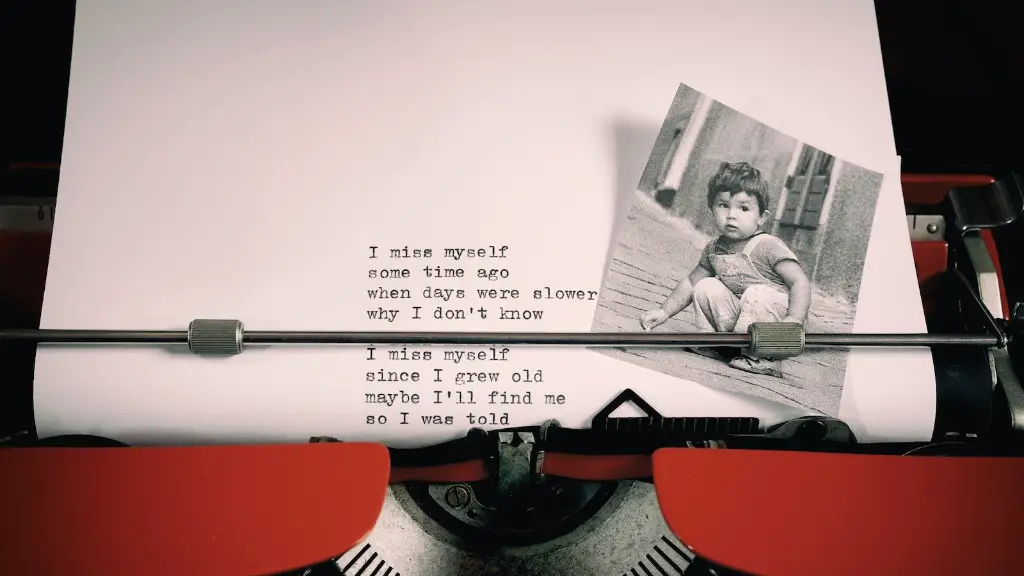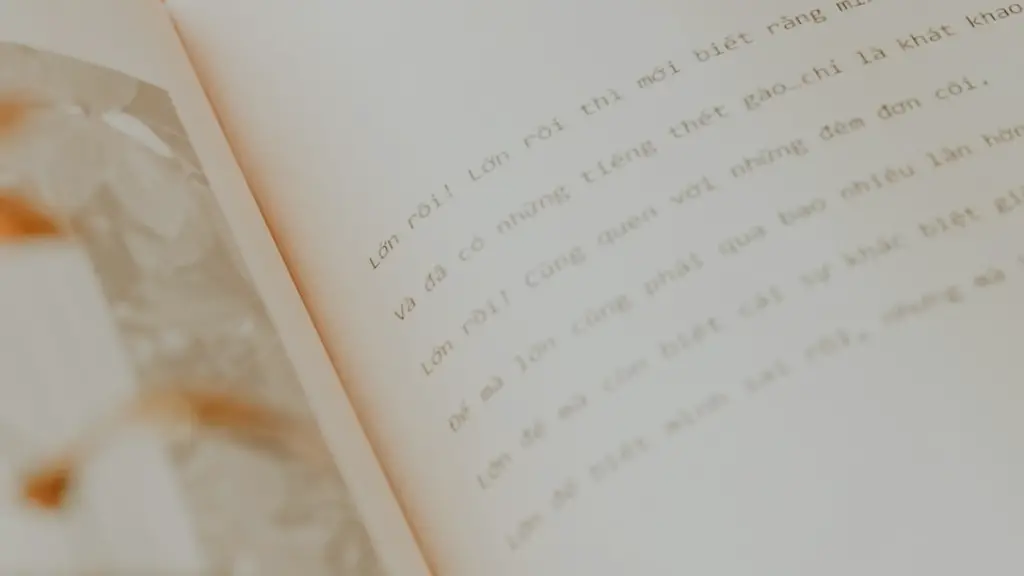Iambic is a meter of poetry that lies somewhere between prose and traditional metered poetry. It has been used since the time of the ancient Greeks and is still popular with modern writers. Named for its metric pattern, “iambic” comes from the Greek name for a particular metrical foot, the iamb. The word itself is derived from the name of the Greek poet Archilochus, who wrote in iambic meter.
In iambic poetry, a line of verse consists of alternating unstressed (or short) and stressed (or long) syllables. This metric pattern is called a foot, and is usually expressed as “x /” where the “x” represents an unstressed syllable and the slash represents a stressed syllable. For example, “de-light /” is an iambic foot. A line of iambic poetry is written with two or more of these feet, like a da-da-dum rhythm. This rhythm gives the poem a feeling of rising and falling, like a heartbeat.
One of the most famous examples of iambic poetry is Shakespeare’s Sonnet 18. This sonnet contains four-line stanzas that exhibit the iambic rhythm. The opening line reads: “Shall I com-pare thee to a sum-mer’s day?” Here, the poem has an alternating pattern of an unstressed syllable (“com”) followed by a stressed syllable (“pare”). So the poem establishes a regular pattern of rhyming, metered lines.
Iambic meter is often seen as the most natural and natural sounding form of regular meter. It is well-suited to expressing the flow of everyday speech, and lends itself to the expression of strong emotion. It is commonly used in both traditional and contemporary writing, including in traditional sonnets, songs, and spoken-word pieces.
Iambic meter also has a unique technical structure. Because of its alternating pattern, each line of iambic verse consists of two strong beats, or stresses. This alternation helps to ensure that when reading the poem, each line is given equal emphasis. This also helps to ensure that each word in the poem carries its appropriate weight and meaning within the context of the poem.
In iambic verse, it is important to pay attention to the way the lines break. A line-break needs to be strategically placed in order to create the desired effect. If a line breaks in the middle of an iambic foot, it has the potential to disrupt the poem’s meter and give unintended meaning. This can distract a reader and take away from the poem’s flow and impact.
In addition to its technical aspects, iambic meter also has tremendous potential when it comes to conveying an author’s message through its emotional power. Its rhythm and meter can give a poem a sense of urgency, intensity, or playfulness. For example, a poem written in the iambic pentameter can give a very different feeling than one written in the iambic hexameter.
Examples of Iambic in English Poetry
Iambic meter is one of the most common poetic meters used in English, and has been for centuries. The fourteenth-century poem, Geoffrey Chaucer’s “The Canterbury Tales” is written in iambic pentameter and is one of the most famous examples of the meter in modern English literature. Other popular works include William Shakespeare’s sonnets, Robert Frost’s “The Road Not Taken,” and T.S. Eliot’s “Love Song of J. Alfred Prufrock”:”Do I dare / Disturb the uni-verse?”
Iambic Meter and Music
Iambic meter is also used in music, particularly in traditional music. Many popular songs that employ the meter include “America” by Simon & Garfunkel, “The Sound of Silence,” “You’ve Got a Friend” by James Taylor, “Bad Moon Rising” by Creedence Clearwater Revival, and “My Girl” by The Temptations. These songs have a pulsing, da-da-dum feel that reflects the meter of traditional iambic poetry.
Meter and Rhyme
Iambic meter can either be rhymed or unrhymed. Rhymed iambic meter uses alternating lines of iambs, with each line rhyming with the previous line. This is often used when writing traditional forms of poetry, such as sonnets and odes. Unrhymed iambic meter is more common in modern poetry, and is used when the poet wants to focus more on the musicality and intensity of the meter, rather than on the rhyme scheme.
Uses of Iambic Meter
Iambic meter is often used to convey a feeling of urgency or intensity. It is also well suited for expressing strong emotion, as its regular pattern of beats makes it easy for the reader to pick up on the sentiment of the poem. Iambic meter can also be used to add a musical quality to a poem and to make it easier to recite or remember.
Origin of Iambic Meter
Iambic meter has been used for centuries in English poetry, but its roots can be traced back to Ancient Greek poetry. The Ancient Greeks used the meter to write epic and tragic poetry. This ancient iambic verse was then adopted by the Romans and adapted to the form of their own language and culture. Today, iambic meter is still in use and is one of the most popular forms of traditional English poetry.
Iambic Meter in the Modern World
Most traditional forms of poetry today still make use of iambic meter. Many modern songwriters and spoken word poets also make use of it. This is due to its ease of use and its natural sound, which conveys a sense of urgency and emotion to a poem. As well as its traditional uses in poetry, iambic meter is increasingly being used in other forms of creative expression such as advertising, film, and theater.



